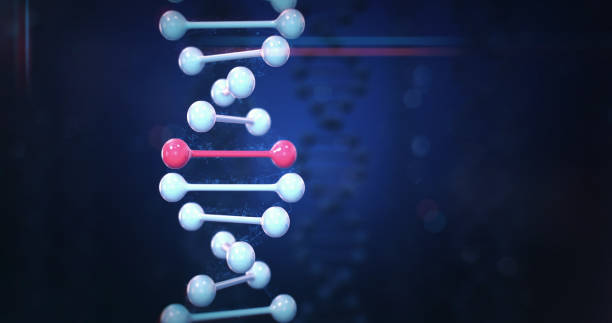A Stem Cell Therapy Los Angeles clinic will use cells that have no specific purpose to boost your body’s natural healing power. These multi-purpose cells are then injected into the area where the damage is occurring. The procedure will also enhance flexibility and Stem Cell Therapy Los Angeles clinic. If you are experiencing joint pain or stiffness, stem cell therapy can help. It may even improve your appearance! Read on to learn more about this procedure. Embryonic and placental stem cells are the most commonly used in stem cell therapy.
RenewMe
At the RenewMe Stem Cell Therapy Los Angles clinic, Dr. Ghalili uses advanced stem cell technology to boost your body’s ability to heal itself. He draws the stem cells from high-volume areas like the adult bone marrow and umbilical cord tissue, and then injects them directly into the injured areas. The stem cells work by triggering a natural process of regeneration.
This treatment can address many painful conditions. Patients suffering from degenerative arthritis, spinal stenos, sports injuries, and tendonitis can benefit from the stem cell therapy. It can also be used to treat erectile dysfunction, failed back surgery, and migraine. This therapy can give patients the lifelong relief they need. The facility prides itself on helping its patients achieve optimum health with stem cell injections.

Regenerative medicine
Regenerative medicine, is the use of your own cells to help repair and rebuild damaged tissue. Adult stem cells can be harvested from a variety of sources, including bone marrow, adipose tissue, and peripheral blood. Most Stem Cell Therapy Los Angeles clinic are mesenchymal, which means they can differentiate into different types of body cells. They can even repair damaged tissue by quickly replicating damaged cells. Adult stem cell therapy has many applications, including the treatment of a wide range of diseases, such as osteoarthritis, rotator cuff tears, and knee meniscal tears.
Regenerative therapy uses the natural properties of your body to create new cells to help alleviate pain in various parts of your body. Among these are stem cells, platelet-rich plasma, and exosomes. These treatments use growth factors and cytokines to stimulate new cell growth and replace damaged tissues. Regenerative medicine at Stem Cell Therapy Los Angeles clinic
Embryonic stem cells
Embryonic Stem Cell Therapy Los Angeles clinic have a number of advantages. They have the potential to cure disease and researchers are already using them in various medical treatments. For example, type 1 diabetics can use transplants of insulin-producing stem cells to treat their disease. Similarly, differentiated stem cells can be used to test new drugs without using animals. Scientists hope that one day they will be able to safely grow and use these cells in human patients.
Embryonic stem cells are derived from a woman’s womb at a fertilized egg. Because they are not differentiated yet, they can divide indefinitely and turn into different types of cells. For example, a Stem Cell Therapy Los Angeles clinic can develop into a muscle cell, a red blood cell, or any other type of cell in the body.

Placental stem cells
One of the newest forms of stem cell therapy is using human placental tissue to repair damaged heart tissue. A $2.9 million National Institutes of Health grant has helped researchers at Mount Sinai find that placental stem cells can repair damaged heart tissue. If proven successful, the research could lead to new therapies to repair organs, including the heart. Dr. Hina W. Chaudhry, Director of Cardiovascular Regenerative Medicine at Mount Sinai, is the principal investigator of the four-year grant.
Amniotic stem cells are harvested from the placenta after a woman has given birth. These cells can repair damage and differentiate between specific tissue types. A placenta is typically discarded after childbirth, but the amniotic fluid in it is valuable and can help repair damaged tissues. It’s not always possible to get stem cells from placenta tissue, so a Los Angeles clinic may use amniotic stem cells from the mother.
Adipose fat tissue
Adipose-derived stem cells can provide full healing within four to six weeks of treatment. Because the cells come from your own body, you won’t have to worry about risk of disease transmission or cell rejection. The procedure involves either an injection or aspiration of your fat cells. After treatment, you can return to work and normal physical activity within a week. The recovery process varies from person to person, so you’ll want to talk with your doctor to find out which type of treatment is right for you.
This treatment is available as a standalone procedure or as an adjunct to surgical procedures. Adipose tissue contains hundreds of thousands of stem cells and has at least ten times more than bone marrow blood. Unlike bone marrow cells, adipose-derived Stem Cell Therapy Los Angeles clinic don’t diminish with age, which makes them a good choice for older patients. They’re also considered pharmaceutical products.
Amniotic fluid
Amniotic fluid and Stem Cell Therapy Los Angeles clinic are used to treat a variety of disorders, from soft tissue defects to joint conditions. Amniotic cells are extracted from the fluid after delivery. They have unique properties, including growth factors and proteins that can treat pain from the root cause. The cells can be injected or applied topically. The procedure is safe, effective, and offers the potential to improve the overall health of the patient.
The benefits of amniotic Stem Cell Therapy Los Angeles clinic are numerous. These cells are free of steroids, which are commonly used for pain treatments. They also contain hyaluronic acid, which acts as lubricant for the joints and tendons, and growth factors that stimulate your own stem cells to replace damaged tissues. These factors make amniotic stem cells a safer option than embryonic stem cells.











